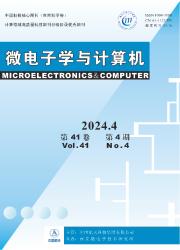
All-solid-state pseudocapacitive micro-supe
Supercapacitors and batteries are considered as the most promising energy storage devices for electric vehicles and renewable energy systems[1,2].Among them,supercapacitors,combined with exceptionally long cycle life and high power density,afford a smart strategy[3-6].As a burgeoning architecture,micro-supercapacitors are of significant importance expecting to couple with micro-batteries in various applications,including AC line- filtering,microelectromechanical system and portable electronics[7-11].Although they can be fabricated using printing and lithography techniques[12-14],continued improvements in lowcost and scalability are required to realize their future ,Tour et a scalable approach for producing porous graphene films with three-dimensional networks from commercial polymer films using laser irradiation,and they have equipped the graphene in micro-supercapacitors systems[15-18].
Here,we combine the laser irradiation process with subsequent electroless deposition of pseudocapacitive materials for the fabrication of all-solid-state CO2laser is first used to convert the polyimide(PI)into porous graphene with interdigitated architecture,which works as conductive matrix for the deposition of pseudocapacitive dioxide(Mn O2)representing pseudocapacitive transition metal oxides is chose via self-limiting electroless micro-supercapacitors are fabricated with the interdigitated electrodes using gel fabricated devices exhibit many advantages in performance such as high capacitance,long lifetime and low leakage current.
The fabrication process of the micro-supercapacitors is detailed shown in Fig.1.In a typical experiment,graphene is obtained from CO2laser induction and designed to form 8 in-plane interdigitated electrodes(four per polarity)on PI substrate[18].The pseudocapacitive Mn O2is deposited on the laser-induced graphene to form Mn O2/graphene(Mn O2/G)composite via a self-limiting process[19-21].Brie fly speaking,the laser-induced graphene was immersed in 0.1 mol/L KMn O4for 15 min.In a p H neutral solution,the reaction between carbon and Mn O4-can be assumed to be:4Mn O4-+3C+H2O→4Mn O2+CO32-+ cleaned by deionized water,solid-state polymer electrolyte containing poly(vinyl alcohol)(PVA)/H3PO4is used to complete the fabrication of the devices[22].The effective area of a micro-supercapacitor is about 6 mm2.
The morphology and structural properties of the composites was characterized by scanning electron microscope(FEI Nova Nano450)equipped with an energy dispersive X-ray spectrometer,X-ray photoelectron spectroscope(XPS,ESCALAB 250)and Raman spectrometer(Renishaw in Via,514.5 nm line of an Ar+laser).Electrochemical measurements were performed using a workstation(CHI 660D).The volumetric capacitance is calculated by CV=∮I d U/(2sVΔU)from the cyclic voltammetry(CV)curves,s is the potential scan rate,V is the volume of the micro-supercapacitor(about 6×10-5cm3),and ΔU is the potential window.
process illustration of the pseudocapacitive micro-supercapacitors.
The Raman spectrum of the graphene in Fig.2a shows three characteristic peaks for graphene-derived material:The D peak at~1340 cm-1induced by defectsor disordered bent sites,the Gpeak at~1580 cm-1showing graphitic sp2carbon,and the 2D peak at~2690 cm-1originating from second-order zone boundary phonons[16].XPS data(Fig.2b)show ed that Mn 2p3/2and Mn 2p1/2peaks were located at ca.642.2 eV and 653.7 eV,suggesting the element Mn in the sample was present in the chemical state of Mn4+[19,23].Each interdigitated electrode branch is about 200μm,according to the scanning electron microscopy(SEM)image in X-ray spectrometry(EDS)mapping analysis of elements Mn,K,C and O(shown in Fig.2d,respectively)from the select area in Fig.2c con firms the uniform distribution of Mn O2in the a magnified image of Fig.2e,the composites present a nanoflake-like structure,with numerous show s the crosssectional SEM image of the MnO2/G composite,and the average thickness of the nanocomposite is about 10μm,generally higher enough than pervious graphene-based micro-supercapacitors’electrodes[24,25].
Fig.2.(a)Representative Raman spectrum of the graphene film and the starting PI film.(b)XPS spectrum of Mn 2p from the Mn O2/G nanocomposites.(c)SEM image of patterned electrode.(d)EDS mapping images from the same area as in(c).(e)Magnified SEM image from(c).(f)Cross-sectional SEM image of the nanocomposites on the PI substrate.
Fig.3.(a)CV curves of Mn O2/G nanocomposites and pure graphene at a scan rate of 100 m V/s.(b)CV curves of Mn O2/G nanocomposites as the scan rate ranging from 10 m V/s to 100 m V/s.(c)Volumetric capacitance of the micro-supercapacitor device and the Ragone plot.(d)Nyquist plot of the devices measuring from 10 m Hz to 100 k Hz.
performance of micro-supercapacitors connected in(a)series and(b)parallel at scan rate of 100 m V/s.(c)Capacitance retention of the device.(d)Leakage current and self-discharge characteristics of the micro-supercapacitor.
We first studied the electrochemical performance of the assembled device using CV experiments in a potential window from 0 to 0.8 V.Fig.3a show s the CV curves of graphene and Mn O2/G devices at a scan rate of 100 m V/s.Since graphene is know n to contribute capacitance by the electric double layer capacitor mechanism,the Mn O2/G device show s much better performance,con firming the necessity of introducing pseudocapacitive materials for designing high performance shown in Fig.3b,the Mn O2/G devices demonstrate excellent pseudocapacitive behavior at scan rates ranging from 10 m V/s to 100 m V/s.The specific volumetric capacitance is derived from the CV curves(Fig.3c).At a scan rate of 10 m V/s,the micro-supercapacitor shows a volumetric capacitance of 1.7 F/cm3,delivering an energy density of 0.15 m Wh/cm3,which is comparable to previous micro-supercapacitors[26-28].Electrochemical impedance spectroscopy(EIS)is used to characterize the ion transport properties over the frequency ranging from 10 m Hz to 100 k Hz at an open-circuit potential(Fig.3d).The nearly perpendicular line with a small tangential angle shown at lowfrequency region indicates good capacitive behavior of the high-frequency regime exhibits a semicircle,with charge transfer resistance no more than 5Ω/cm3,indicating the conductivity of the Mn O2/graphene is even better than the pure graphene scaffold.
下一篇:没有了
